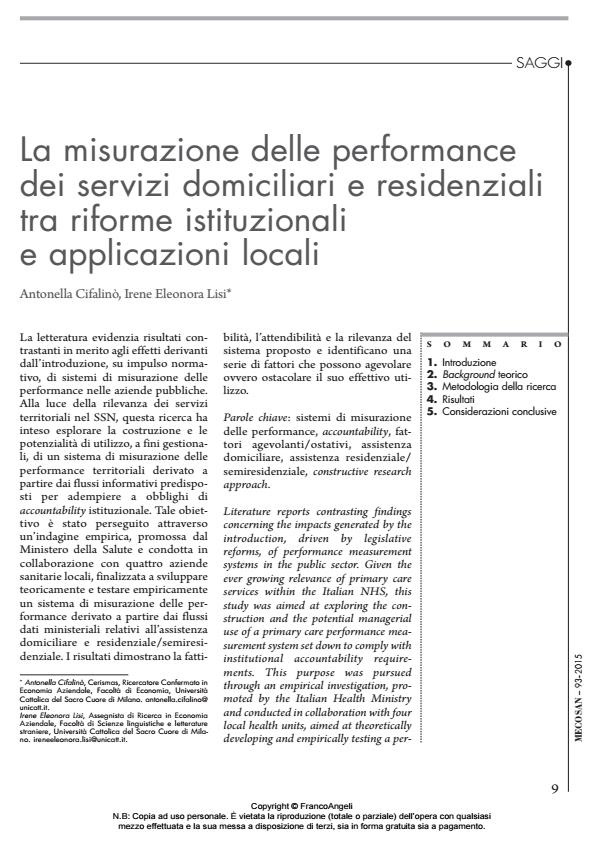La misurazione delle performance dei servizi domiciliari e residenziali tra riforme istituzionali e applicazioni locali
Journal title MECOSAN
Author/s Antonella Cifalinò, Irene Eleonora Lisi
Publishing Year 2015 Issue 2015/93
Language Italian Pages 24 P. 9-32 File size 1017 KB
DOI 10.3280/MESA2015-023002
DOI is like a bar code for intellectual property: to have more infomation
click here
Below, you can see the article first page
If you want to buy this article in PDF format, you can do it, following the instructions to buy download credits

FrancoAngeli is member of Publishers International Linking Association, Inc (PILA), a not-for-profit association which run the CrossRef service enabling links to and from online scholarly content.
Literature reports contrasting findings concerning the impacts generated by the introduction, driven by legislative reforms, of performance measurement systems in the public sector. Given the ever growing relevance of primary care services within the Italian NHS, this study was aimed at exploring the construction and the potential managerial use of a primary care performance measurement system set down to comply with institutional accountability requirements. This purpose was pursued through an empirical investigation, promoted by the Italian Health Ministry and conducted in collaboration with four local health units, aimed at theoretically developing and empirically testing a performance measurement system based on data contained in the ministerial flows regarding homecare and residential care services. Results demonstrate the feasibility, reliability, and relevance of the proposed system and identify several factors that may facilitate - or obstacle - its actual use.
Keywords: Performance measurement systems, accountability, facilitating/ impeding factors, homecare, residential care, constructive research approach.
- Il ridisegno dei processi di cura secondo l'approccio value-based: quali insegnamenti da un multiple case study? Simone Laratro, Marco Giovanni Rizzo, Stefano Villa, in MECOSAN 126/2024 pp.7
DOI: 10.3280/mesa2023-126oa17279
Antonella Cifalinò, Irene Eleonora Lisi, La misurazione delle performance dei servizi domiciliari e residenziali tra riforme istituzionali e applicazioni locali in "MECOSAN" 93/2015, pp 9-32, DOI: 10.3280/MESA2015-023002